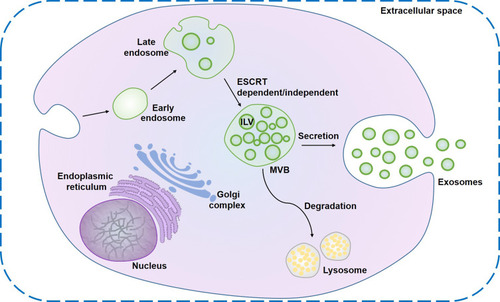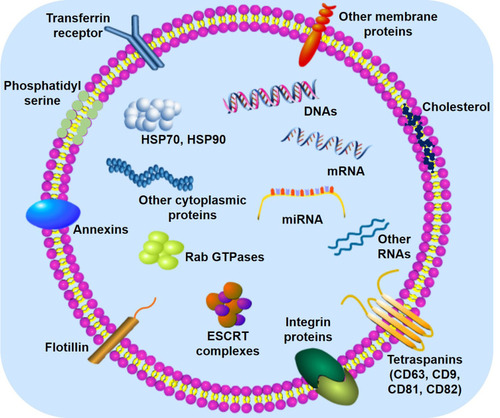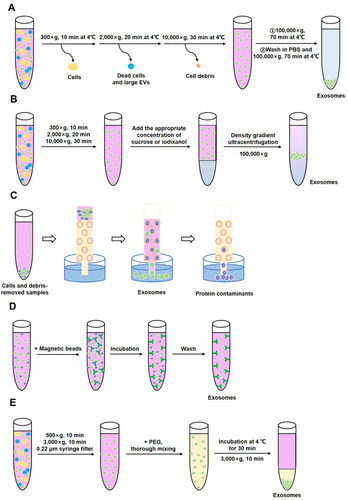Figures & data
Figure 1 Biogenesis of exosomes. Exosome formation originates from the early endosomes formed by plasma membrane invagination. The membranes of mature late endosomes buds inward to form ILVs and transform into MVBs. After the MVBs fuse with the plasma membrane, ILVs are released into the extracellular space to form exosomes.

Figure 2 The main components of exosomes. The lipid bilayer of exosomes contains specific lipids such as cholesterol and phosphatidylserine, which can protect the contents from degradation. In addition, various membrane proteins (eg, Tetraspanins, Annexins, Flotillin, and integrin proteins) and intracapsular proteins (eg, HSP70, HSP90, and Rab GTPases) are present in exosomes, each of which assumes different roles. ESCRT (endosomal sorting complex required for transport) is mainly involved in the generation of exosomes. DNA, mRNA, and miRNA are the key genetic materials in exosomes.

Figure 3 Major methods of exosome isolation. (A) Differential ultracentrifugation (B) Density-gradient separation (C) Size exclusion chromatography (D) Immunological isolation (E) Precipitation.

Table 1 A Brief Description of the Biological Role of Exosomes in Related Eye Diseases
